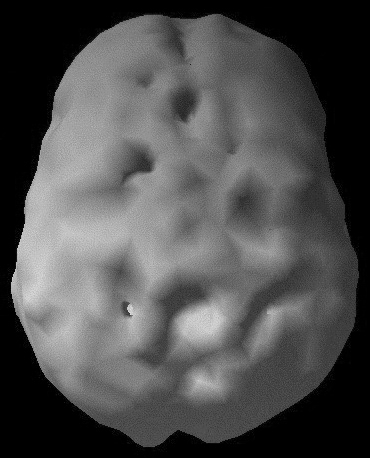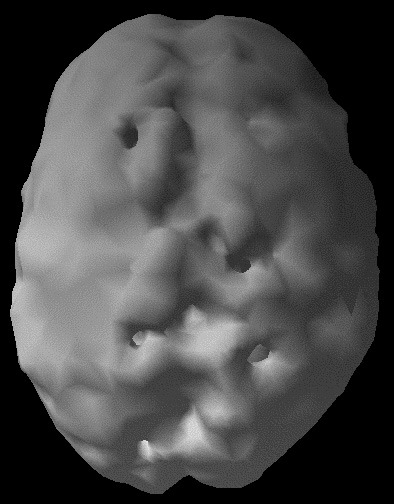CHAPTER 4
THE BRIGHT MINDS APPROACH TO RESCUING YOUR MEMORY
THE BEST WAY TO HELP PREVENT OR TREAT MEMORY DECLINE AND ALZHEIMER’S IS TO KNOW AND ADDRESS ALL YOUR RISK FACTORS
If you are sitting on a tack, the treatment is not two Advil every three to four hours. The treatment for “tack sitting” is “tack removal.” Search for the root and treat the cause rather than the symptoms.
If you are sitting on two tacks, removing one tack does not eliminate 50 percent of the symptoms. Complex conditions are “complex.” To be effective address all the underlying causes for resolution.
SIDNEY BAKER, MD, INTEGRATIVE MEDICINE PIONEER
The reality is this: If you want a stellar memory, you need to know all the potential contributors that can destroy it and address each one. As Jesus told his followers, “You will know the truth, and the truth will make you free” (John 8:32, NCV). But first, at least when it comes to adopting a healthier lifestyle, the truth is likely to make you miserable!
We don’t like to face the truth about ourselves —our weaknesses, bad habits, and vulnerabilities. However, until we own up to them and get serious about change, our attempts will likely be fleeting, and we’ll be distracted by the next popular fad.
And change we must. I truly believe that a single pill will never fix memory decline, aging, or Alzheimer’s disease because there are too many ways trouble can occur. This is a war that must be fought on multiple fronts.
I have organized the key risk factors on the following pages according to my BRIGHT MINDS model, with each component weighted in terms of just how damaging it can be to your brain and memory. In the following chapters, I’ll go through all of the risk factors and provide strategies to turn each of them around. But first you need to know where you stand.
Mark the risks that apply to you. If you don’t know whether you have a risk factor, refer to the specific chapter to learn more. When you get to the end of the assessment, add up your score. The number in parentheses next to each risk factor is the relative increase in risk for memory problems, accelerated aging, and AD compared to those without that risk factor. Here’s how it translates: 1.3 = 30 percent increased risk; 1.5 = 50 percent increased risk; 2 = double the risk, 3 = triple the risk, and so on.
Blood Flow
- 1. History of a stroke (5)[18]
- 2. History of cardiovascular disease, including coronary artery disease, heart attacks, heart failure, and heart arrhythmias (2)[19]
- 3. Prehypertension or hypertension in midlife (2)[20]; low blood pressure in later life (1.3)[21]
- 4. Erectile dysfunction (1.7 for all ages; 6.1 between 50 and 64; and 27.2 for men over age 65)[22]
- 5. Limited exercise (less than twice a week) (2)[23]
Retirement/Aging
- 6. Age: 65 to 84 (2), 85 and older (38)[24]
- 7. Too much television viewing (more than two hours a day) (2)[25]
- 8. A job that does not require new learning (2)[26] or retirement without new learning endeavors
- 9. Loneliness or social isolation (2)[27]
Inflammation
- 10. Periodontal (gum) disease (2)[28]
- 11. Presence of inflammation in the body, indicated by high homocysteine or C-reactive protein (2)[29]
- 12. Low omega-3 fatty acids (see information on the Omega-3 Index test, page 102, chapter 7) (2)[30]
Genetics
- 13. One family member with Alzheimer’s or dementia (3.5); more than one family member with Alzheimer’s or dementia (7.5)[31]
- 14. One apolipoprotein E (APOE) e4 gene (2.5) or two APOE e4 genes (10)[32] (if known, based on genetic testing)
Head Trauma
- 15. A single head injury with loss of consciousness (2)[33]
- 16. Several head injuries without a loss of consciousness (2)[34]
- 17. Loss of one’s sense of smell (2)[35]
Toxins
- 18. Smoking cigarettes for 10 years or longer (currently or in past) (2.3)[36]
- 19. Alcohol dependence or drug dependence (currently or in past) (4.4)[37]
- 20. History of radiation for head and neck cancers (3);[38] chemotherapy for breast cancer (1.5),[39] colorectal cancer (1.25),[40] and possibly other cancers
- 21. Chronic exposure to heavy metals, such as lead, cadmium, mercury, arsenic, or aluminum (1.5)[41]
- 22. Chronic mold exposure (1.5)[42]
- 23. Kidney dysfunction (2)[43]
Mental Health
- 24. Post-traumatic stress disorder (4),[44] bipolar disorder (2),[45] schizophrenia (2),[46] depression (3.5),[47] or chronic stress (2)[48]
Immunity/Infection Issues
- 25. Autoimmune issues, such as multiple sclerosis (1.5), rheumatoid arthritis (3),[49] systemic lupus erythematosus (2),[50] Crohn’s disease (1.5),[51] severe psoriasis (3)[52]
- 26. Adult asthma (1.3)[53]
- 27. Chronic Lyme disease or other infectious process in brain/body not fully treated (2)[54]
- 28. Cold sores or genital herpes (2)[55]
Neurohormone Deficiencies
- 29. Low in thyroid,[56] estrogen (in females),[57] or testosterone[58] (males and females) (2 for each one)
- 30. Hysterectomy without estrogen replacement (2)[59]
- 31. History of prostate cancer with testosterone-lowering treatment (2)[60]
Diabesity
- 32. Prediabetes or diabetes (3)[61]
- 33. Being overweight or obese in middle age (3)[62]
- 34. Being underweight in older age (2)[63]
Sleep Issues
Total Score: Add up the total number of risk factors you have plus the total of all the numbers in parentheses (relative risk factors).
- ___ Total number of risk factors
- ___ Relative risk factors (the total score from the parentheses)
Interpretation of Relative Risk Factors:
- If the score is 0–6: You likely have a low risk of developing AD.
- If the score is 7–14: You have a moderate risk; consider annual screening (lab tests, repeat of WebNeuro cognitive testing, and checkup with health-care provider) after age 50.
- If the score is greater than 14: Consider annual screening (lab tests, repeat of WebNeuro cognitive testing, and checkup with health-care provider) after age 40.
Looking at memory loss risk, based on risk factors, has a precedence in a large study from Finland. Specifically, researchers looked at age, gender, education, blood pressure, weight, cholesterol, and physical activity in a large sample of middle-aged adults. They found a significant increase in dementia within 20 years among those with a higher number of risk factors.[66]
ADDRESS ALL RISK FACTORS TO KEEP YOUR BRAIN HEALTHY
The Amen Clinics Memory Rescue program eliminates or treats as many of the risk factors above as possible. If you follow the program, you will also improve your mood, weight, blood pressure, blood sugar, gum health, and sleep. If you want the best results and best health, read up on all the risk factors and try to incorporate as many of the recommendations from each as you can. But if you have fewer risk factors, focus on the recommendations provided in the BRIGHT MINDS chapters relevant to your issues. Those are the factors that are stealing your memory now. Chapters 5 through 15 will help you understand each of these risk factors, how to diagnose them, and what to do to properly treat, reduce, or eliminate them.
How to make positive changes —and make them stick
Whether you have many risk factors that are affecting your brain and memory or just a few, you will want to make sure the new habits you adopt from the BRIGHT MINDS Program will last. Thankfully, researchers have been looking into what can help you in this process. When you first start to make a big lifestyle change, you often feel positive and empowered. You want to feel healthier and get your memory back, and you are resolved to make the necessary lifestyle changes. But eventually you may get distracted or busy at work, leading you to skip your workout, grab fast food, or skimp on sleep.
Don’t give up! It’s natural to temporarily lapse into previous habits because your brain still recognizes those old behavior pathways. But your brain has tremendous plasticity and can learn new pathways to healthier behaviors if you keep repeating them. Here are several strategies to help you succeed.
Make a commitment. Research has shown that making a resolution or goal and then putting it on paper (or on your computer) can help you be more successful, especially when your initial gung ho spirit wanes. Even better, share your intention with a supportive friend and send a regular progress report to that person.
Make a note of it. Another way to stay on target is to write down the health-boosting actions you take. You might want to start a journal to track your progress.
Plan ahead. Some of the activities you begin will require time in your schedule. In order to be successful, you need to create space for these new behaviors and clue in your family and other people in your life so that they can support your program. If you are successful, they will benefit too! Look for ways to adapt your schedule: Mark off time to exercise or make healthier meals, for instance, and treat these activities as you would important appointments.
Celebrate your small victories. Instead of looking ahead to what you haven’t yet done, take a few moments every few days or each week to look back at what you have achieved. This is known as the “horizon effect.” This viewpoint helps to build enthusiasm and the drive to keep going. It’s a way to continue inspiring yourself.
When you make mistakes, be curious and not furious at yourself, so you can learn from them. Everyone messes up at some point, and you will too. And not just once! Stop any negative thoughts by reminding yourself of what you have accomplished (enlist a supportive friend or family member if you have trouble with this part). The key to improving your memory and your brain is making little changes that accumulate over time and being as consistent as possible.
WHAT SHOULD EVERYONE DO, NO MATTER WHAT?
Everyone should take the following five steps to protect their memory and brain.
- 1. Assess your brain regularly. As mentioned in the last chapter, Amen Clinics use an online test called Brain Fit WebNeuro, which is available at www.mybrainfitlife.com. You don’t have to use our test, but it is important to assess yourself on a yearly basis.
- 2. Know your important health numbers. Many business leaders operate by the old adage that “you cannot change what you do not measure.” That is true of your health as well, so it is critical that you know your important numbers, which will be explained throughout this book. If, for example, your body mass index is too high, you can get serious about your weight, or if your Omega-3 Index is too low, you can eat more fish or take an omega-3 fatty acid supplement. If blood tests are needed to assess your risk, you can ask your health-care provider to order them, or you can visit one of our clinics.
General Numbers to Know
- Body mass index (BMI)
- Waist-to-height ratio (see page 233)
- Blood pressure
Blood Tests
- Complete blood count (CBC)
- General metabolic panel (kidney and liver function)
- Lipid panel
- Fasting blood sugar
- Hemoglobin A1c (HbA1c)
- Fasting insulin
- Homocysteine
- C-reactive protein (CRP)
- Ferritin level (measure of iron store)
- Thyroid panel
- Testosterone level
- DHEA level
- Vitamin D
- Folate
- Vitamin B12 level
- Plasma zinc
- Serum copper
- Magnesium
- Omega-3 Index
- APOE gene type
- 3. Know, treat, and eliminate your specific risk factors (see chapters 5–15).
- 4. Follow the Memory Rescue Diet (see chapter 16). This is one of the most important strategies for lasting health.
- 5. Take basic supplements daily, including a 100 percent multivitamin/mineral complex with extra vitamin B6, B12, folate, and vitamin D, plus omega-3 fatty acids EPA and DHA. Then use targeted nutraceuticals (which I define as supplements with medicinal properties) based on your specific BRIGHT MINDS needs (explained in the next 11 chapters).
THE SCIENCE BEHIND NUTRACEUTICALS
Many doctors will say that you don’t need supplements or that they are a waste of money, but I agree with my friend Mark Hyman, MD, director of Cleveland Clinic’s Center for Functional Medicine. He wrote that people who “eat wild, fresh, whole, organic, local, nongenetically modified food grown in virgin mineral- and nutrient-rich soils” that has not been “transported across vast distances and stored for months before being eaten” may not need supplements if they “work and live outside, breathe only fresh unpolluted air, drink only pure, clean water, sleep nine hours a night, move their bodies every day, and are free from chronic stressors and exposure to environmental toxins.”[67] But because we live in a fast-paced society that makes it convenient to run to the drive-through, skip meals, buy chemically treated and processed foods, and indulge in sugary treats, we could all use a little help from a multivitamin/mineral supplement.
Over the last 25 years I have been excited to see the research showing that high-quality, targeted supplements can have a positive impact on the brain. Here’s a powerful example: In 2009, Amen Clinics performed the world’s first and largest brain imaging study on active and retired NFL players. Many of them complained of memory problems and scored very poorly on the cognitive tests we gave them. As a group, their brain SPECT scans looked awful. For the treatment arm of the study, we used brain health education and targeted nutraceuticals. Our protocol demonstrated increased blood flow to multiple brain areas, including the prefrontal cortex and hippocampus, and improvements in memory, attention, and processing speed.[68]
My interest in nutraceuticals started after I began using brain SPECT imaging to help understand and treat my patients. One of the early lessons SPECT taught me was that some medications, especially those for anxiety and pain, had a negative effect on the scans, revealing areas of low blood flow (see next page). Later I learned some studies show that these medications increase the risk of dementia and strokes.[69] In medical school, I was taught, “First do no harm. Use the least toxic, most effective treatments.”
As I looked for alternatives to these medications to help the children and adults I was serving, I discovered that many natural supplements had strong scientific evidence with fewer side effects than prescription medications. For this reason, I give specific nutraceutical recommendations in each of the BRIGHT MINDS chapters.
MEDICATIONS THAT ARE TOXIC ON SPECT SCANS

Healthy

Anti-Anxiety Benzodiazepines

Opiates for Pain
Pros and cons of nutraceuticals
In considering nutraceuticals, it is important to understand their pros and cons. First, many have been studied extensively and have a significant scientific body of research pointing to their effectiveness. Nutraceuticals generally have far fewer side effects than most prescription medications and are much less expensive. Also, because prescriptions for medications become part of your medical records and can affect your insurability (people are often denied or forced to pay higher rates for health, life, disability, and long-term care insurance because they have taken certain medications), natural alternatives that work are sometimes a better option.
Yet nutraceuticals have some drawbacks. These supplements can also have side effects, so they need to be used carefully. (Just because something is natural doesn’t mean it can’t be harmful. After all, arsenic and cyanide are natural!) Also, though nutraceuticals are generally less expensive than medications, they may prove costlier because they are usually not covered by insurance.
A major concern about nutraceuticals is the lack of quality control in their production. Studies have shown that supplements don’t always contain what their labels claim, which means they might be ineffective or even harmful. Many people get their advice about these products from the clerk at the health food store, who may not have the best information. You may need to do some work on your own to find brands you can trust. The best approach to finding quality supplements is to develop a relationship with the brand and communicate your questions and issues to their technical and quality control staff.
Even considering these issues, the benefits of nutraceuticals (and their relatively low risks compared to medications) make them worth considering, especially if you can get thoughtful, research-based information. Every day I personally take targeted nutraceuticals because I believe they make a significant difference in my life.

Are Your Medications Making You Sick?

The following to-do list will help you customize and begin your own Memory Rescue program:
- Know your specific risk factors.
- Learn the steps to make lasting positive changes.
- Assess your important health numbers on a yearly basis.
- Adopt easy strategies for each of the BRIGHT MINDS risk factors.
- Start simple with supplements: a multivitamin/mineral complex and omega-3 fatty acids EPA and DHA. Know and optimize your vitamin D level.
